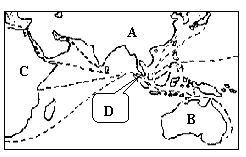| [Visitor (113.218.*.*)]answers [Chinese ] | Time :2024-02-21 |  The oceans are divided into several broad areas: the territorial sea, the exclusive economic zone and the high seas. The oceans are divided into several broad areas: the territorial sea, the exclusive economic zone and the high seas.
In terms of legal system, the United Nations Convention on the Law of the Sea divides the oceans into inland seas, territorial seas, contiguous zones, exclusive economic zones, continental shelves, straits for international navigation, archipelagic waters, high seas, and international seabed areas. Among them, some areas intersect each other in their natural locations.
If it is divided according to the marine environment, it can be divided into 7 natural zones:
(1) Arctic zone. It includes most of the area of the Arctic Ocean outside of the Barents. Marine life is relatively simple.
(2) North temperate zone. It is bordered by the Arctic zone to the north and the sea area at about 40° north latitude in the south. The water is rich in nutrients and plankton.
(3) Tropical. It is located between 40°N and 10~18°N. Plankton and economically valuable fish are both less.
(4) Equatorial zone. It is located between "0°~18°" north latitude and 0°~8 Du south latitude.
(5) Southern tropics. It is located between 0°~8°S and 40°S latitude. The characteristics and genesis are basically the same as those of the northern tropics.
(6) South Belt. It is located between 40°~60° south latitude, and the development and growth conditions of marine organisms are similar to those of the northern temperate zone. Marine plants flourish. Fish are very abundant.
(7) Antarctic belt. Located between the south latitude of 60 and the Antarctic continent, southeasterly winds from the polar regions prevail throughout the year, and the water temperature is very low. There are fewer species of organisms |
|
